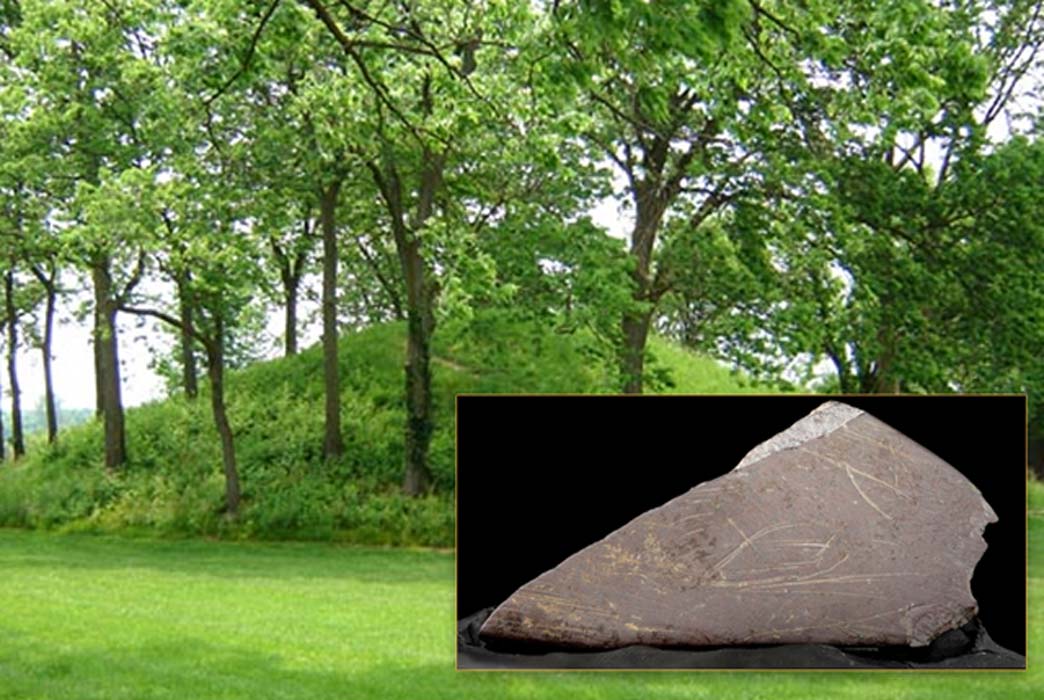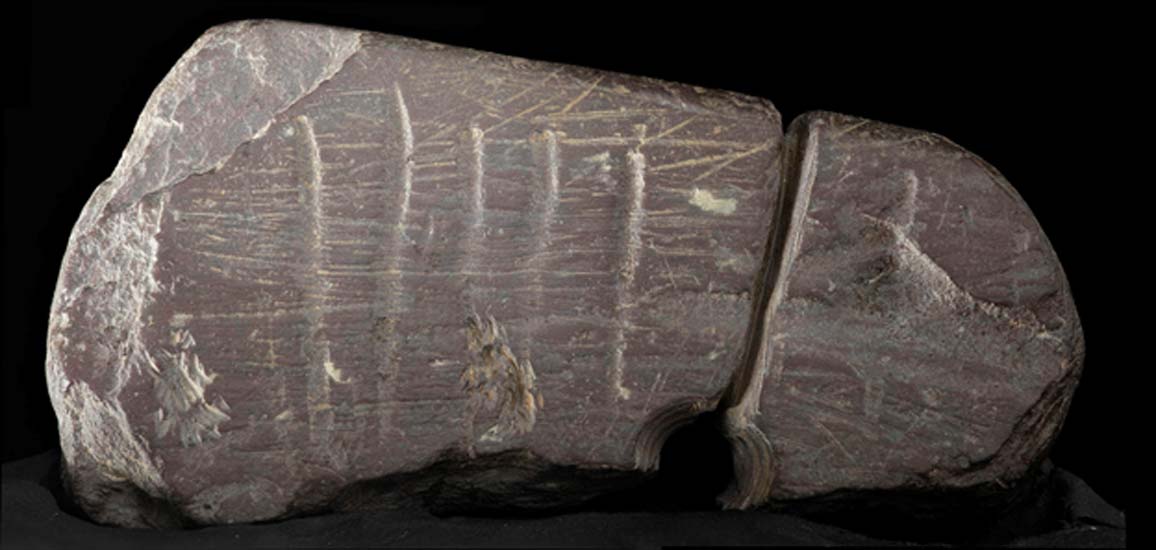
Foundations of Stone – Part I : Investigating the Megalithic Aspect of Late Archaic and Woodland Cultures in West Virginia
The data for this article regarding the Charleston Earthworks is largely derived from the handwritten manuscript of P.W. Norris. The authors have used this version of the report due to the needless exclusions of data and erroneous measurements inherent in the published version of Cyrus Thomas.
In 1882 and 1883, Col. P.W. Norris of the Smithsonian Institution surveyed and performed excavations of 50 earthen mounds and between eight to 10 sacred enclosures of the Adena culture at Charleston, West Virginia, on behalf of the Eastern Mound Division of the Bureau of Ethnology. Overlooking the Charleston works in the bluffs and high places were around 40 stone mounds, at least one of which featured a burial in a subsurface pit three feet deep, with two steatite pipes, three lance heads, and a gorget. Norris recorded no less than 64 of these stone mounds throughout the Kanawha Valley.
The Ruins of Stone Works
At the Mt Carbon site in Fayette County, the ruins of a vast series of stone works once existed. The Mt Carbon site consisted of six walls made of piled stone, incorporating natural boulders and cliffs, oriented on a north/south axis. As many as 40 cairns and three to five earth mounds, as well as a stone circle six feet (1.8 meters) in diameter and possibly an initiatory cave were features of this extensive mountaintop site. The stone walls and other structures at Mt Carbon were positioned to incorporate two natural springs into the design.
At the foot of Mt Carbon, Col. P.W. Norris described a circular stone wall 100 feet (30 meters) in diameter and three to five feet high (1 to 1.5 meters), enclosing a stone mound 30 feet (nine meters) in diameter and 10 feet (three meters) high. This mound featured a passage from the outside to the inner chamber. Similar stone mounds with literal doorways leading to the central burial vaults were found in the bluffs of the Mt Carbon area.
A review of Edward McMichael’s excavations at the Mount Carbon “Village Site”, located along the Kanawha river below Mt. Carbon, brings to light several notable features useful in identifying the stone builders of the Kanawha Valley. Artifacts included with a series of subsurface pit burials were tubular copper beads, red ocher, gorget fragments, and “Adena-like” sandstone slabs covered in red pigment. Archaic side-notched and Adena-stemmed points, hammerstones, pitted (cup-marked) stones, and an Archaic beveled adze were also found. Although McMichael ascribed the pottery at the site to the Middle Woodland period, both Fayette Thick and Adena Plain sherds were present. Burial 7 included red ocher, while burial 8 included 12 rolled copper tubular beads. Burial 4 was interred with a Late Archaic birdstone. Burials 4 and 12 both featured cranial deformation, identified as the occipital flattening distinct of Adena and certain Red Ocher associated individuals.

Gorgets and points from the Adena culture, found at the Serpent Mound site. Representational image. (CC BY-SA 3.0)
Although McMichael attributed the Mt Carbon works to a Late Fort Ancient Like group under the auspices of his “Buck Garden” phase, the features noted here for the burial ground in the valley are all plainly indicative of Archaic Red Ocher/Glacial Kame and Early Adena. While a Late Woodland component is in all likelihood present at the Mount Carbon works, we would suggest that the site is actually multi-component, featuring a Late Archaic/Early Woodland manifestation previously unrecognized in West Virginia.

Ritually killed gorget, Adena culture. This fragment was found along the banks of the Patuxent River in Maryland. Part of the ritual appeared to be ritually "killing" things of beauty such as this gorget, spears, and what were probably previously buried human bones. Some of the gorgets appeared to have had designs on them and then “erased”. Representational image. (CC BY 2.0)




